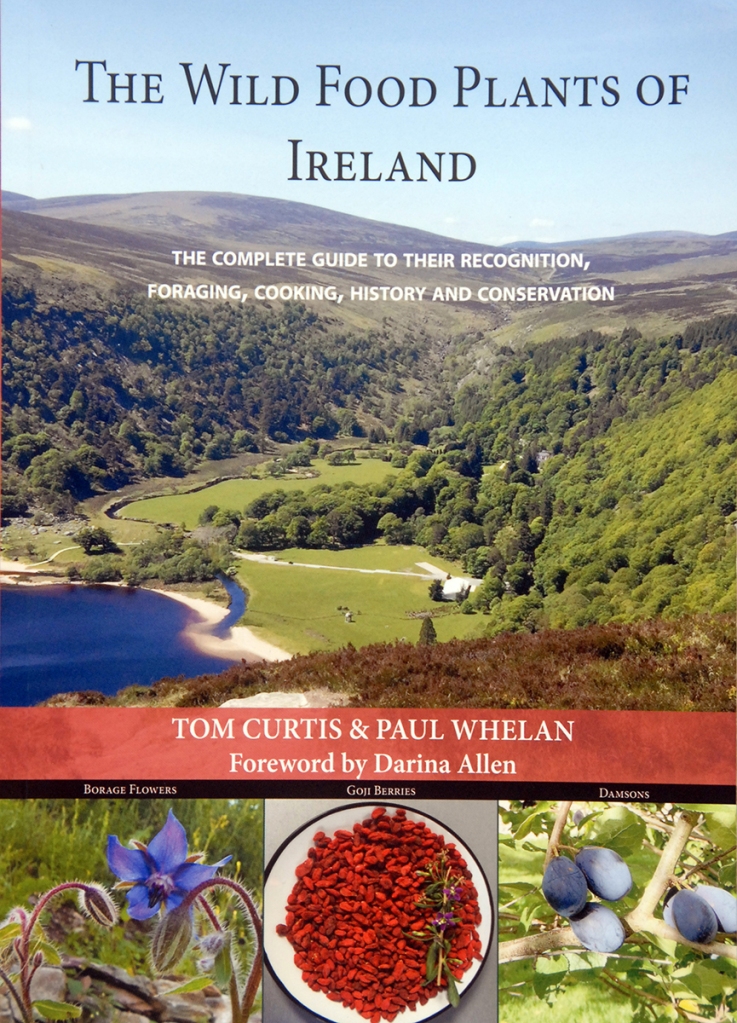Dining on the Long Acre – The Wild Food Plants of Ireland
Reading Tom Curtis and Paul Whelan’s book, The Wild Food Plants of Ireland, has brought another layer, a greater depth of interest, to my wildflower wanderings along our road in recent days. The damsons on the boundary ditch of the garden have set well but I’ll have to wait for them to ripen before picking and making jam. The crabapple tree across the road from the gate has a marvellous set of fruit this year and will lead to a bounty of jelly should I be moved to the bother, for I am not hugely in love with crabapple jelly. I found a single plant of Fat Hen yesterday in the bare ground of a field gate but, eaten as spinach, it would hardly fill me but there is always the cress, sorrel and wild celery for variety. Wild strawberries were always a treat at this time of year as they grew on the disused railway line near our home but this is now the Waterford Greenway and the strawberries fell to the progress of tarmacadam.

I have mentioned just a very, very few of the plants which we might collect from the wild and put to culinary use at home but it is interesting aspect to our wild plants and there is a revival in enthusiasm for these wild foods so this book comes at an opportune moment for it catches the feelings of the time and the love of the wild which people hold close and, for me, brought back childhood memories of eating “bread and cheese”, picking fraochauns and blackberries and, more importantly, that joyful association of fun and happiness that went with gathering and eating food.
The quickest flick of the pages shows immediately that this is a book of deep research and great depths of information and a reading not only confirms this but reveals that it is also full of interest and a joy to read. Of course, this came as no surprise to me as Tom Curtis’s book on Irish orchids is one of those which lies always within hand’s reach and is in regular use. This, The Wild Food Plants of Ireland, is another such high-quality publication and one I recommend without hesitation.

In her introduction, Darina Allen says, “gathering food in the wild is a forgotten skill, hardly a necessity, but in reality, much of the food we eat nowadays is nutritionally deficient. However, wild foods that have been untampered with provide a wide range of vitamins, minerals, trace elements and micro-nutrients that are no longer available to those who live on a diet of highly processed foods.” As the quality of processed food and the food grown and offered for sale to us continues to decline, the genetic resources available in wild foods become more and more invaluable, a food safeguard and saviour for the future while this book will act as a record and reference for future use.
Worldwide, 30 crops provide 95% of the world’s food needs and 75% of all agricultural crops have disappeared, cast aside in the quest for greater efficiency of production. Though this situation is serving our needs presently, it also puts us in a very vulnerable position. Present agricultural crops consist of just a few genetic varieties and, because of this loss of genetic diversity, they are more susceptible to pests and diseases – should a disease of wheat, for example, emerge then the food supply of the world will be greatly threatened as we grow so few genetically different varieties. Wild food plants have survived for millennia and have the genes which have protected them from pests and diseases. It is essential, vital, that we conserve these wild varieties as a gene resource for future agricultural crops. These are our Crop Wild Relatives, ancestors of our present day food plants, which we can still gather and eat.

These, above, are the serious and very important aspects of this book but it is also filled with interesting recollections of how wild plants were used formerly and how we might enjoy them all the more with a little knowledge and guidance. Picking blackberries or fraochauns will be a childhood memory for many and will recall the fun and enjoyment of those days, the pleasure of the collecting, the scoff of eating and the sense of achievement of jam-making. There are countless references to recipes and wild food uses in times gone but, equally, pointers to delicious modern-day cooking from Darina Allen, Biddy White-Lennon and others – the recipes are not given but we are told where to find them!
Go, forage and cook!
[The Wild Food Plants of Ireland, Tom Curtis & Paul Whelan, Orla Kelly Publishing, Softback, 259 pages, €30, ISBN: 978-1-912328-47-5]

